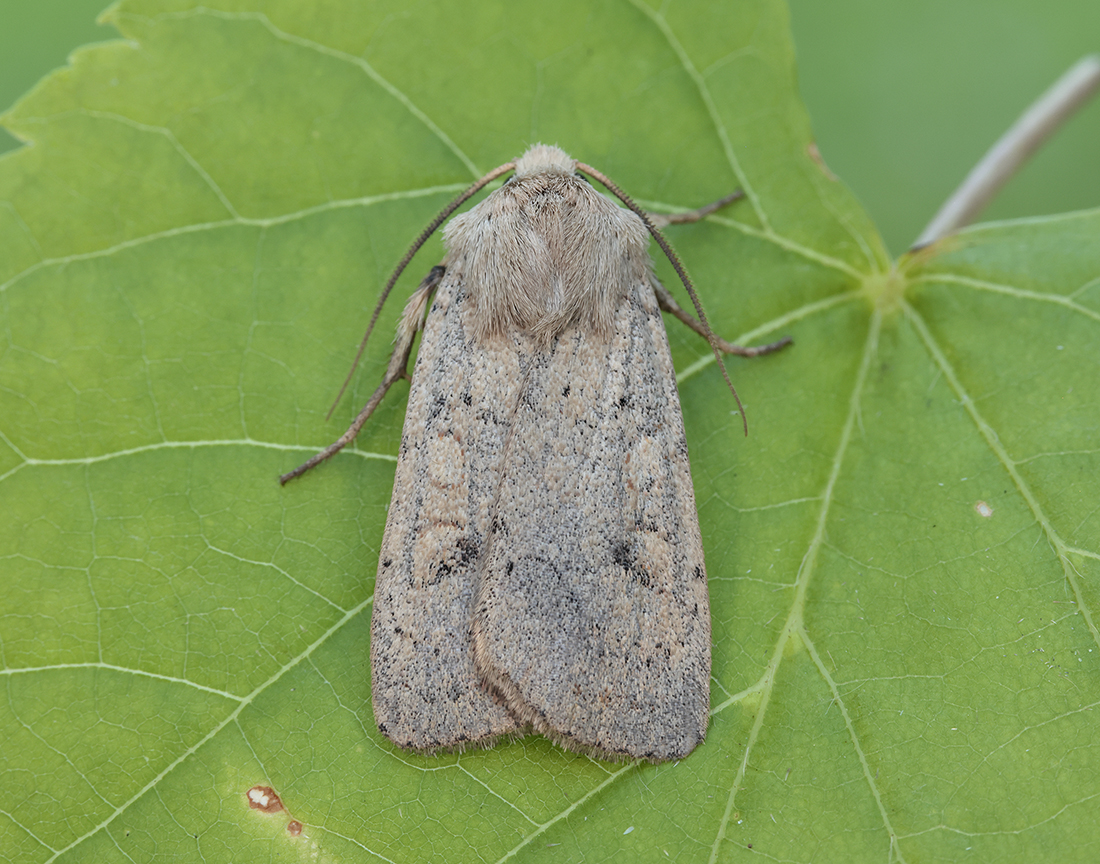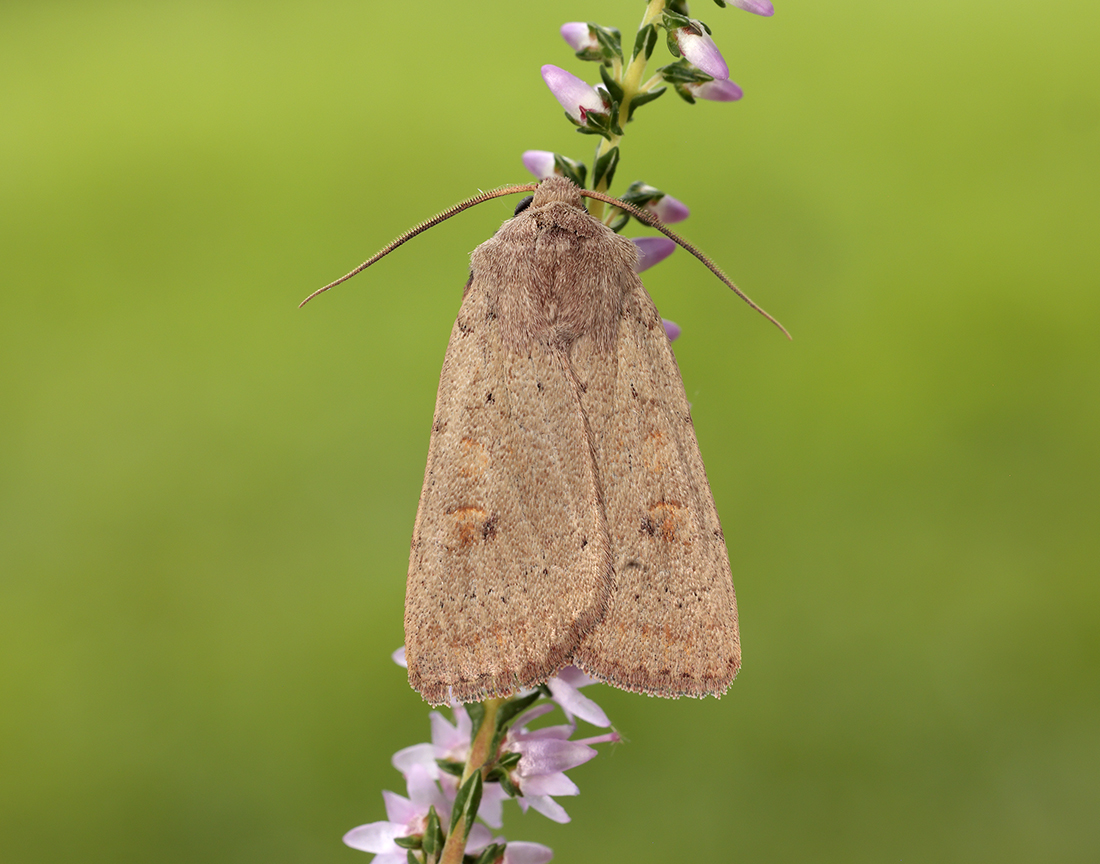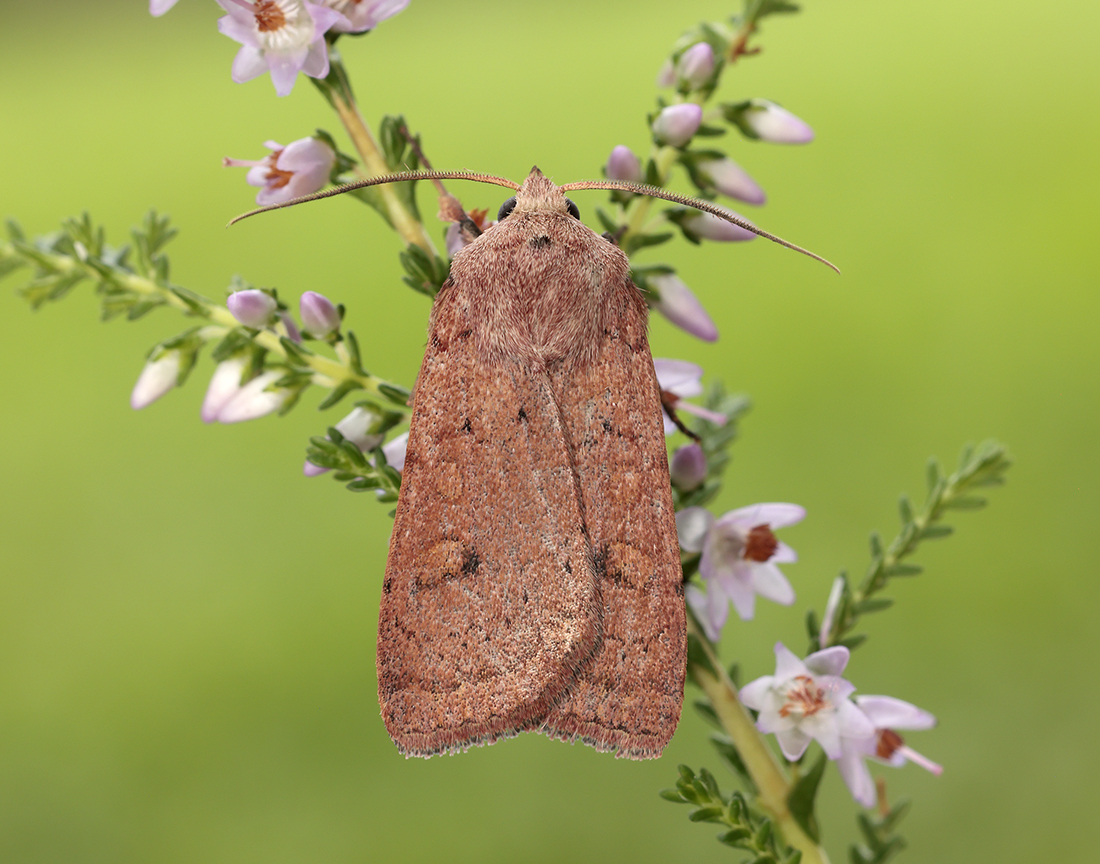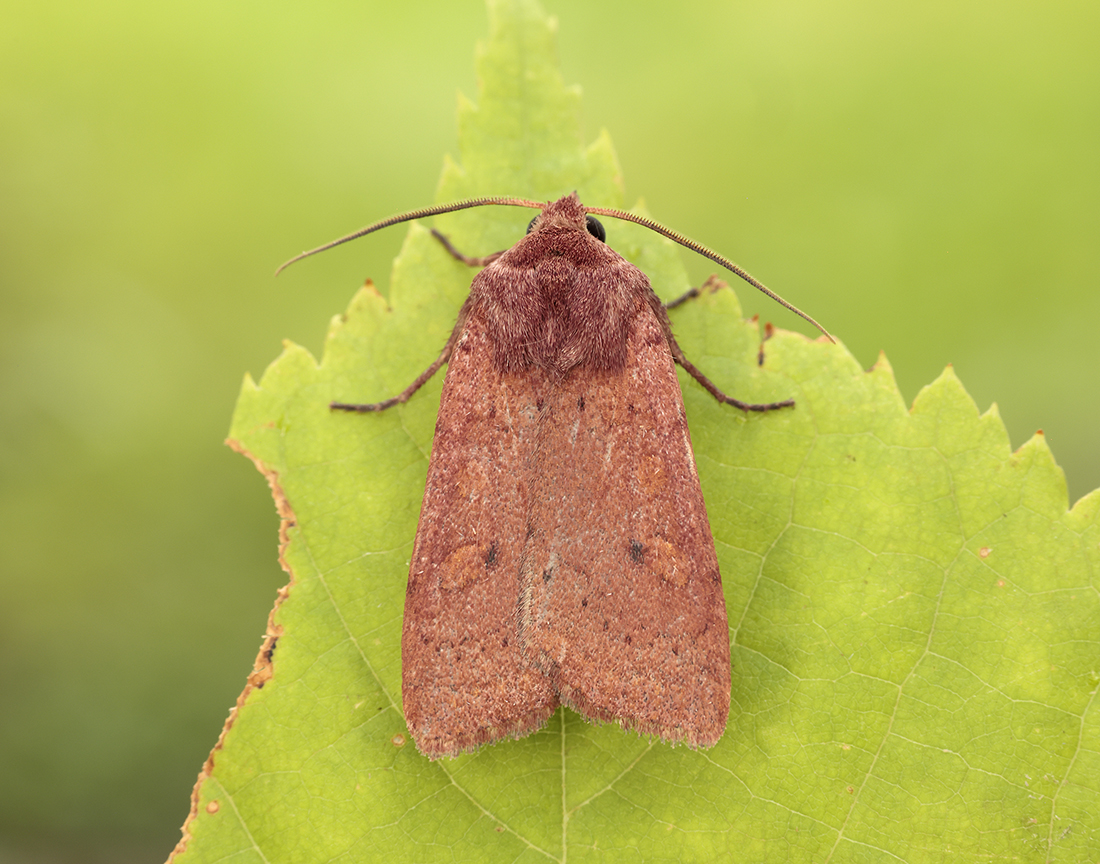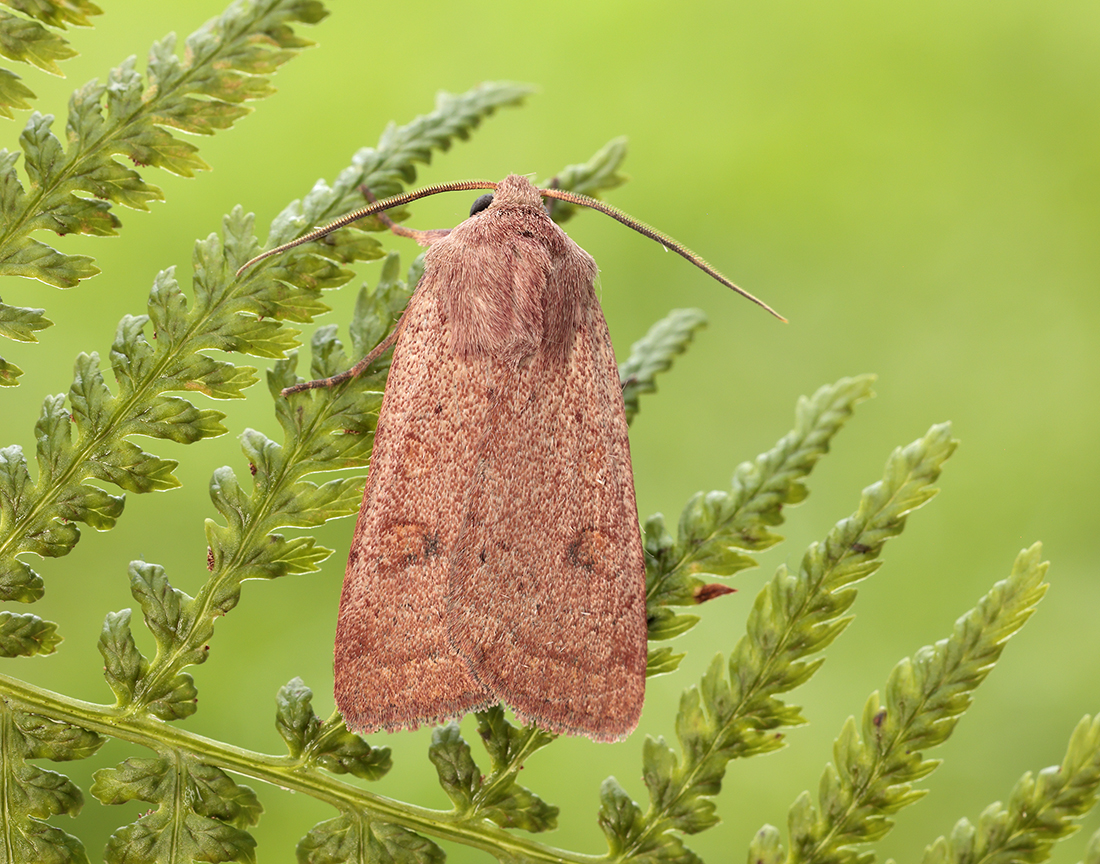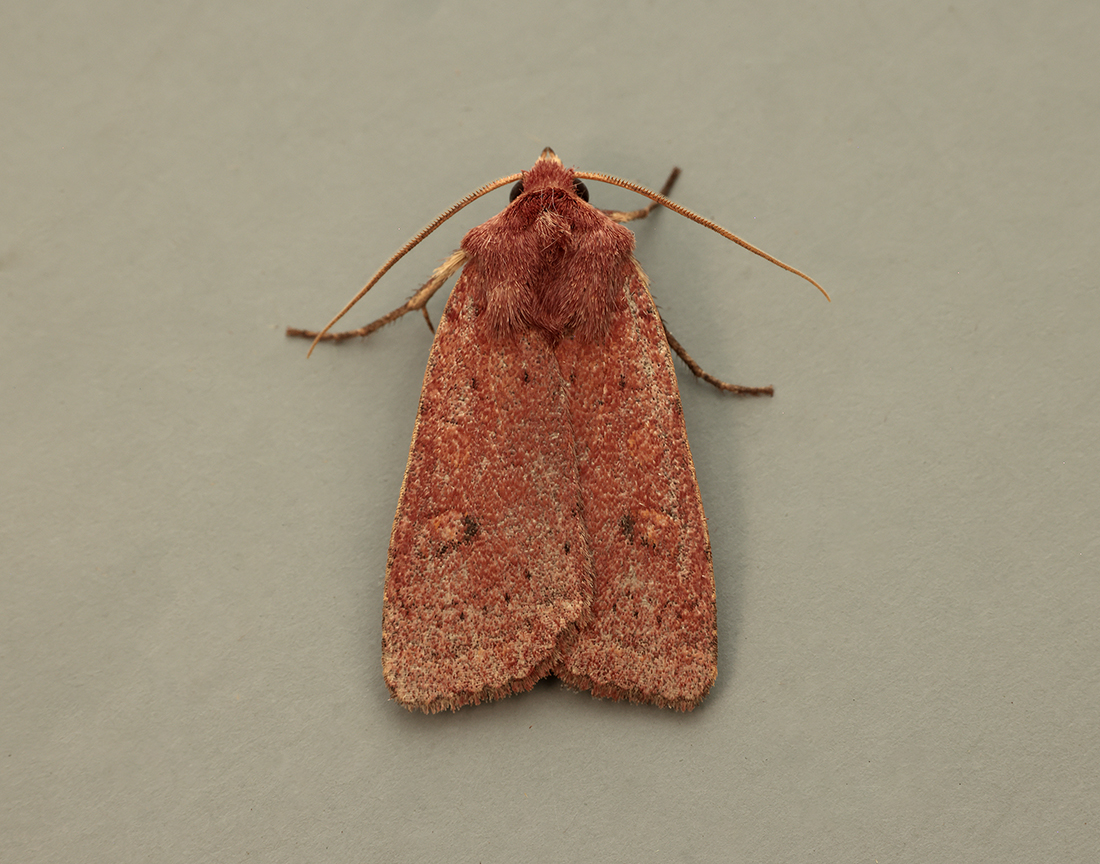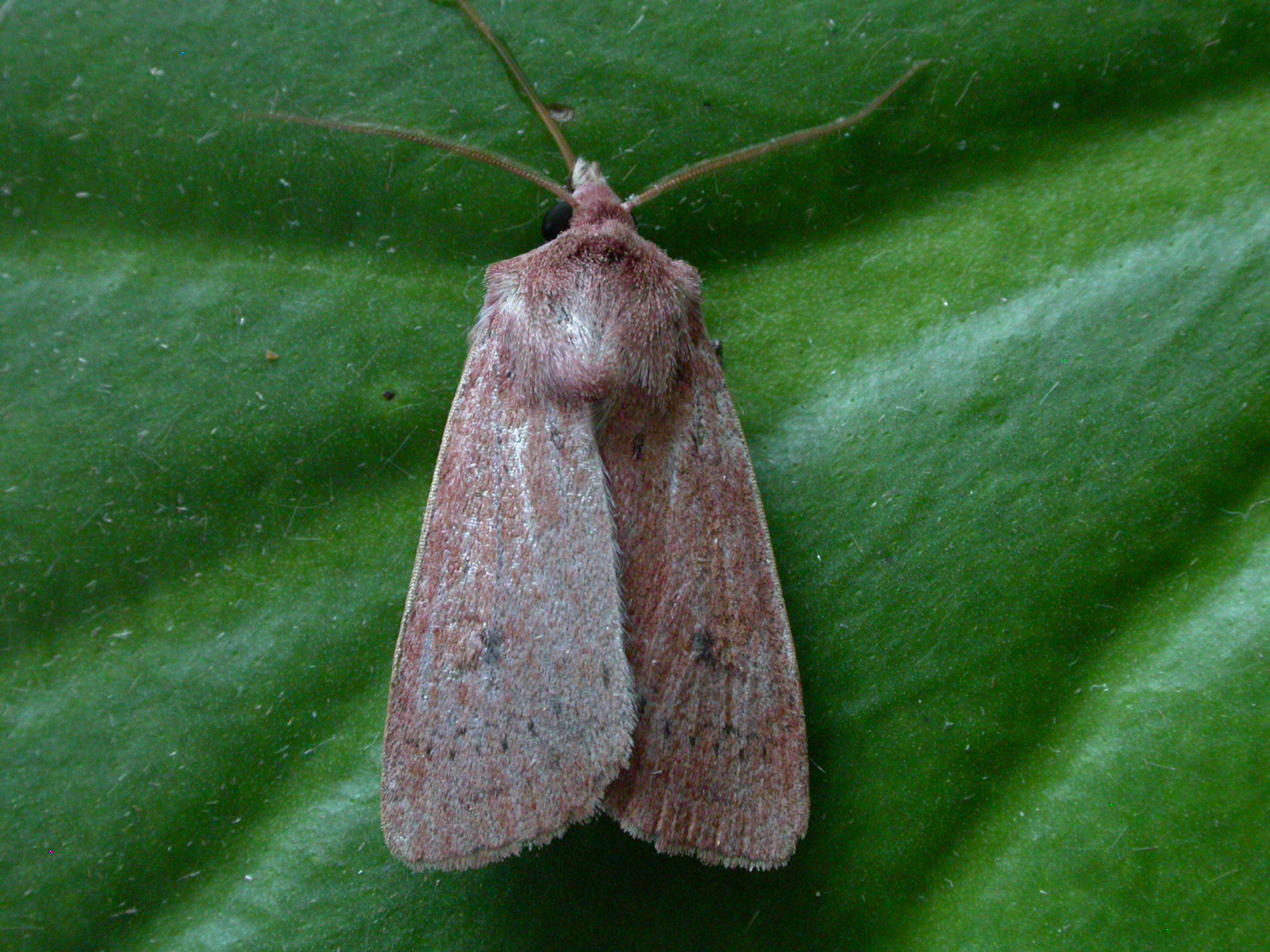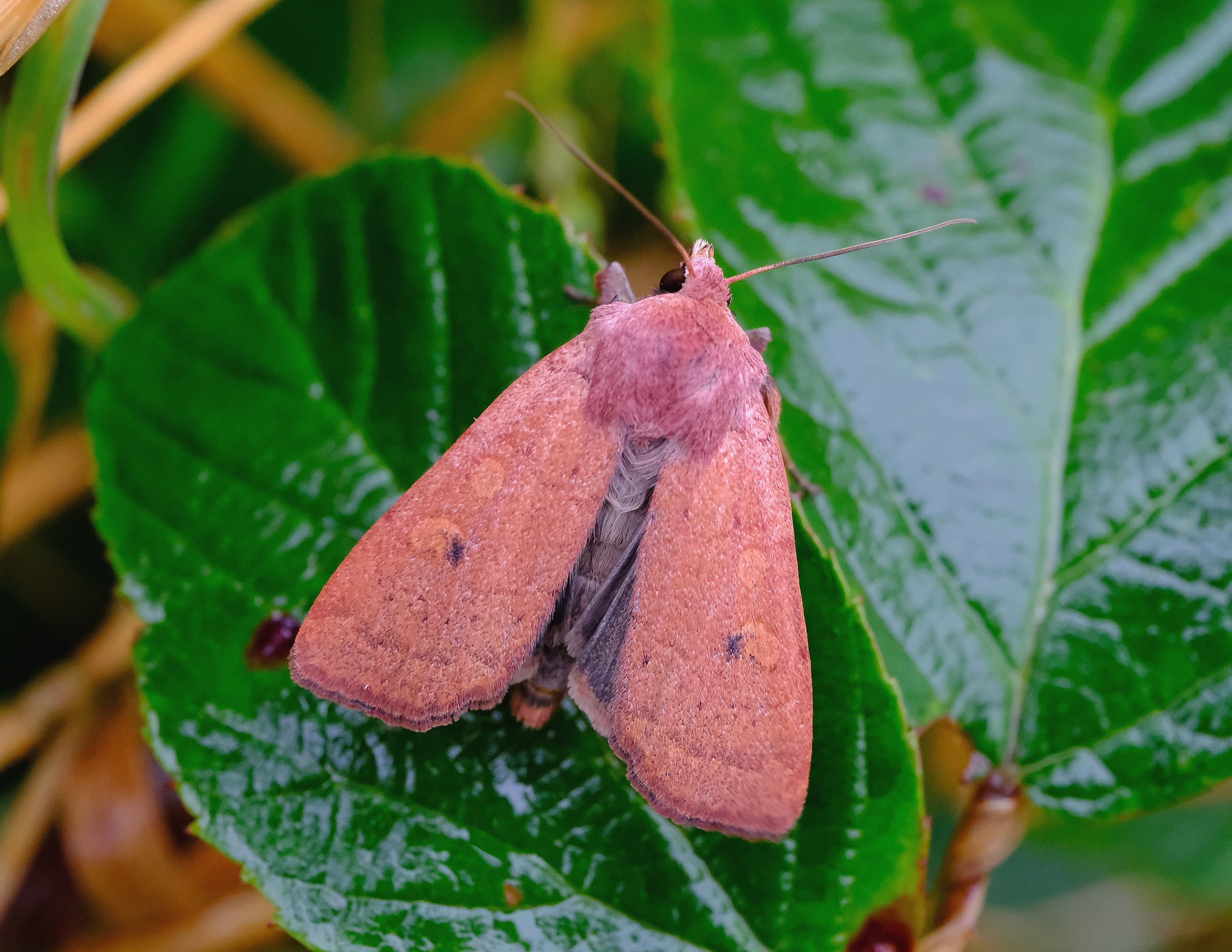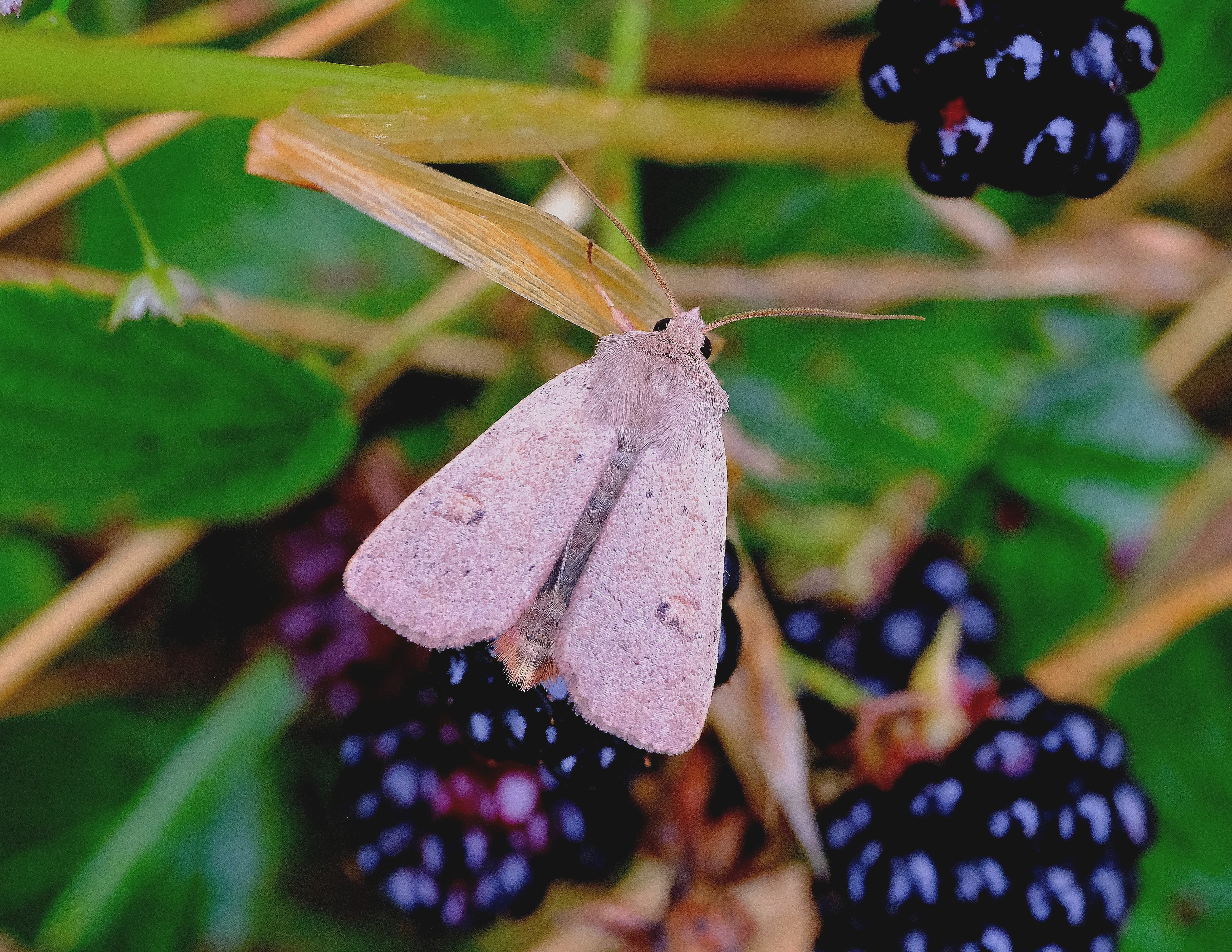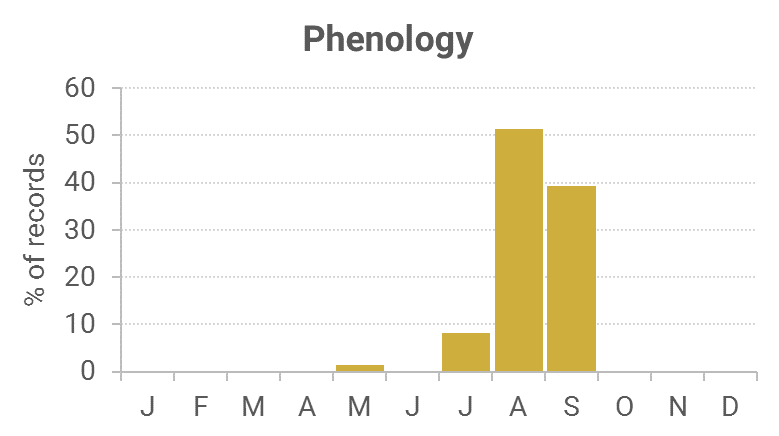Identification
A rather plain, finely marked moth but generally unmistakeable. Variable in colour from greyish to reddish-brown. Conspicuous black mark to the base of the kidney.
Recording Method.
Attracted to light, also comes to sugar and flowers.
Life cycle
One generation. Overwinters as a small larva during October to May, then, after spending about six weeks underground pupation takes place.
Larval foodplants
Larvae feed on Cross-leaved Heath, Bell Heather and Heather.
Habitat
Raised bogs, open and wooded heathland, moorland.
History
Buchanan White of Perth (1895) listed it as occurring in Colvend parish. Gordon (1913) had found it not uncommon on the moors around Corsemalzie, finding it fairly common at heather blossom in August. W. S. Brocklehurst informed Gordon that he had taken it at light and sugar at Park Place, Glenluce, in August 1909 and 1910, both the red and grey forms.
Sir Arthur Duncan (1909-84) during his lifetime had found it at Closeburn, Tynron and Castlehill, Dumfries (all VC72). The only other Dumfriesshire sites are the Raeburn Flow and Durisdeer Rig.
In Wigtownshire it has only been recorded from Carsegowan Moss, Garheugh, Glenluce, Sandhead and the Mull of Galloway RSPB.
During 1960-2010 most of the 26 records from Kirkcudbrightshire came from Mersehead RSPB and Kirkconnell Flow NNR, with others from Edingham, Kirriereoch, Knowetop Lochs SWT and the Silver Flowe to name a few, but it is a scarce moth.
The ochreous grey form neglecta Hübner that is found among the typical reddish-orange examples was noted in 1909 and 1910 at Glenluce (VC74) and again on the Bennan, Merrick (VC73) in August 2004.



